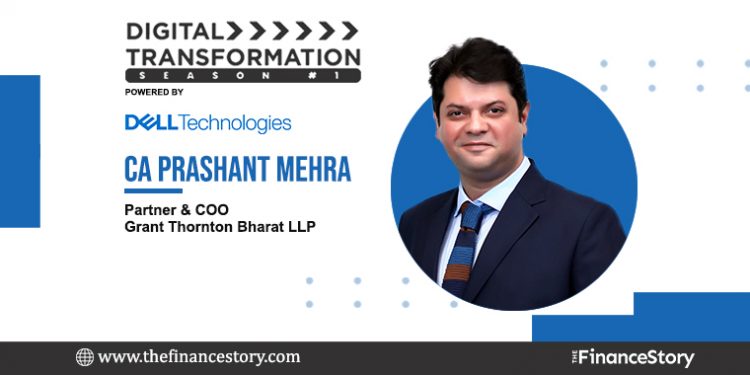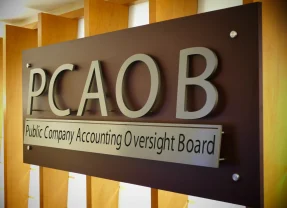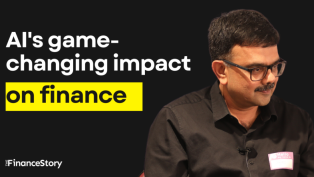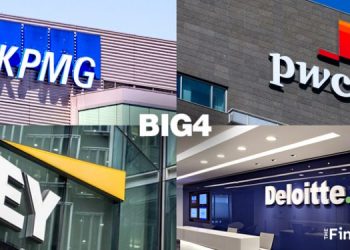- Meet Prashant Mehra, a Chartered Accountant, Partner, and COO at Grant Thornton Bharat – with over 5,000 people across 15 locations in the country.
- As a Transactions Partner with 20+ years of experience (of which 2 years have been with Grand Thornton UK), he focuses on both sell-side, buy-side, and fundraising transactions for venture capital and private equity houses, banks, and corporates.
- Prashant mentions that, since Grant Thornton Bharat believes in a People first approach, they understood the technical requirements early on accelerating their decision-making process.
- As part of The Finance Story Digital Transformation series powered by Dell Technologies, we spoke to Prashant to understand his journey in understanding technology as well as the Technology adoption process of Grant Thornton.
What is Digital Transformation for you?
Digital Transformation to me is something very straightforward – anything that lacks empathy is capable of being digitally transforming.
I believe that the end product or the purpose of digital transformation should be to make things more efficient and over a period of time, it should make things economical as well.
And, as far as possible, it should be free of errors too because there is no human element, it’s all managed by a machine.
In a nutshell, Digital transformation means convenience and efficiency to me.
You started your career at GT in 2002. How was it working at GT in 2002 when there was limited technology versus now?
Since I started my career at GT, I have evolved with the firm. So let me share how we both have evolved on the digital front.
If I divide my professional career into three parts, it would be IT, Technology, and lastly, Digital Transformation.
The IT phase was all about embracing desktops, laptops, dial-up connections to broadband, access to storage devices, and printing machines.
Then came the Technology phase where we started looking for Office applications, Cloud, and applications for Analytics.
Finally, in 2015, the Digital Transformation phase started. Things started becoming a little more sophisticated than earlier. It was about mobile applications, managing things virtually, and whatever was left, the pandemic ensured that became possible as well.
Let me give you a detailed explanation of each phase and how we kept adopting the technology:
2002-2010
- We started adopting IT from 2002-2010 where we primarily used Office and Email applications.
- Using Data Analytic Tools to analyze large pieces of data – Helped in being more efficient and making sure we do not suffer from analysis paralysis.
- Using Filtration Tools to reconcile the same data obtained from multiple sources – Helped to validate and made the data used in analyzing and reporting more reliable.
- Visualization Tools to make our Reports visually appealing and reader-friendly – Helped in providing recommendations from a layman’s perspective in a manner that could be easily understood.
2010-2014
- Then 2010 onwards, we started investing in creating Technological infrastructures in-house and business applications.
- Timesheet Management – To record time spent, manage team utilization, negotiate fee overruns, etc.
- ERP – Managing the business, expenses, and teams.
- Staff Appraisal System – Setting and monitoring goals and performance assessment.
2015 onwards
- From 2015 onwards, we embarked on the Digital Transformation journey. For instance, we started shifting Email and Office applications to Cloud, we rolled out mobile applications for our CRM and ERP advanced channels, and collaboration platforms. These advanced channels also helped us in decision-making.
- Used Cloud-based Infrastructure
- Online Conferencing Tools
- CRM Software, adopted MS Sharepoint which provided the entire firm visibility to clients, sectors, and channels.
- Developed an assurance analytical tool CLEAR Insights
- Adopted GTax Pro for Tax Compliances; GTCMS, which manages all the Compliances; Heat Maps to track work progress.
- An initiative towards Methodology & Automation where we hired the best talents. This division is helping us automate our execution and operation procedure so that we can become more efficient while delivering to the clients.
What was the technology adoption during the pandemic when everything shifted to 100% WFH?
We became the first Professional Services Firm in India amidst the pandemic to announce that “work from anywhere” is going to be there forever, irrespective of the pandemic.
Now, for that, we had to ensure that we were enabling all the employees with the virtual infrastructure. So firstly, we moved all the data to Cloud, including employees’ data on their desktops or laptops. Therefore, we operate 100% on the Cloud now.
We have also taken up MS Teams, and Office 365 licenses for everybody in our team (from Partners to Trainees) which means that anybody from our team can create virtual meetings. This has really brought us together even during the pandemic.
All of it has made us more efficient and our productivity has increased as well. Although screen time has increased, I believe we will be able to strike a balance.
Interestingly, we also moved our interactive platforms to digital. Earlier we used to have a physical townhouse and town halls for our employees. But during the pandemic, we moved to a CEO digital open house where people could get onto MS Teams or Zoom and ask questions to the CEO.
For the first time, we had our India Partner Conference with almost 2000+ people attending the event.
CRM and ERP are also getting more sophisticated, so, people now don’t have to make calls or send emails to access data. They have everything either on their mobile phones or on their laptops. Also, since everything is on Cloud, it’s not a space constraint as well. Laptops are just access machines and at the same time, we are protecting data against misuse.
As a Partner and now a COO of the Firm, what is your role in deciding which technology to adopt and which to skip?
Most of the senior partners along with the CEO and CIO play a key role in technology adoption and filling in the technology gaps and needs. But all that we do is based on the feedback we receive!
In simple words, when it comes to deciding on the technology requirements, it depends on the user; the user could be a Trainee, a Manager, a Partner, or a Technical person from IT.
For instance, because of remote working, we had given MS Teams, Zoom, and Laptops (laptops were there before the pandemic also) to all our people but they did not have Bluetooth Headsets to conduct the meetings effectively! This was actually pointed out by one of our Senior Consultants.
Hence we sent out Bluetooth headsets to all our employees so they could walk and talk and keep their health goals intact. So, something as small as that made a huge difference.
Everyone is talking about Cloud Support: what does cloud mean to your firm?
First of all, it’s important to understand why we need Cloud. In virtual environments, there are several risks that we carry out. The two most major ones are:
- Space Constraints; the capacity of any hard disk that can be put in a laptop.
- Risk Constraints – In case something happens to a machine, the entire data is lost and backup tools are not entirely effective.
This is why we adopted a hybrid IT approach where Cloud is the first priority for business applications.
We do have our in-house IT infrastructure to ensure that we meet our business and legal commitments to our clients and stakeholders.
We also invested very heavily in cybersecurity processes to ensure that we are protected at all times and also have a 24/7 monitoring and review mechanism to minimize the risk of cybercrime incidences.
So, it’s a combination of having our own servers where our data is stored but at the same time, the key data used on a real-time basis is stored on the Cloud. Hence, people don’t have the risk of losing their data and neither are they constrained by the capacity of their machines.
According to you, how have the means of delivering services changed after adopting technology?
First of all, it has absolutely changed. Below are two examples describing how technology has improved the service delivery process:
1. One large part of what we do is Assurance. For this, we have updated an analytical tool called CLEAR insights. Standard algorithms are fed into it and it gives us an analysis of the financial statements, helps us to do walkthroughs, and test checks, and gives us comfort regarding whether as Auditors we can rely on those statements or not. Sometimes, it even gives us comparative data wherever appropriate and required.
2. Another part of the Firm is transaction-based Due Diligence. Earlier we used to put the financial statements in an Excel workbook and worked on the analysis. Now, we have got a tool that acts as both a filtration and a visualization tool where we feed raw data and it gives us a format that we are happy with. So, we save time in making it look good and at the same time we save time in ensuring that the data is reliable and reconcilable.
How do you measure the ROI of all the digital investments and have you experienced any significant savings because of technology adoption?
The economic benefit is something that comes over a period of time.
For instance, when a government builds a bridge, they call it a socio-economic benefit wherein the economic benefit comes from the toll taxes. The socio-economic benefit is that it gives people employment, reduces fuel consumption, and connects to different places for easy trade.
So, we have something similar when it comes to measuring anything that we do around technology and we have three simple measures to do that:
- Budgets and Targeting which is from a Topline and Bottomline perspective. Fortunately, we have been growing and meeting our targets as early as the closure of this Financial year.
- Measuring whether our clients are happy to recommend us to somebody else. In 2021, we got a score of 71% which we call the Net Promoter Score (client feedback score). This has been a great achievement for us since last year we were somewhere between 50%-60%.
- Measuring the ENPS (Employee Net Promoter Score). In FY 2020, it was 7% which has now increased to 34% in FY 2021.
So, these are three simple measures that give us confidence that we are going in the right direction. It is also creating an impact for us, both in terms of our clients, and people who work for us, as well as our Financial matters.
Recently a lot of CAs are innovated with various techniques that can help firms save a lot of time. Do you encourage your people to innovate?
There are so many innovations coming up and I think that these innovations are just a seed. Once more research, time, money, and effort are given, I am sure that the seed would develop into a tree tomorrow.
We should always encourage such innovations.
In fact, in our Partner conferences, we have our own version of the Shark Tank where Managers and others come up with ideas and we fund those ideas into initiatives for the Firm.
At present, we are coming up with a social platform for our own people where they can share their ideas and feedback on a real-time, visible basis which would have a stronger impact.
All in all, we have been encouragers of even the smallest of innovations and have been funding interesting ideas.
Lastly, what would be your advice for small and mid-sized CA firms regarding Technology?
My piece of advice to my fellow Chartered Accountants would be that if technology makes work easier and more efficient, we should not hesitate to embrace technology.
But at the same time, be conscious that anything requiring empathy is best done by humans.
Now It’s Your Turn…
Do you have any questions for Prashant? Please comment and he will get back to you.














